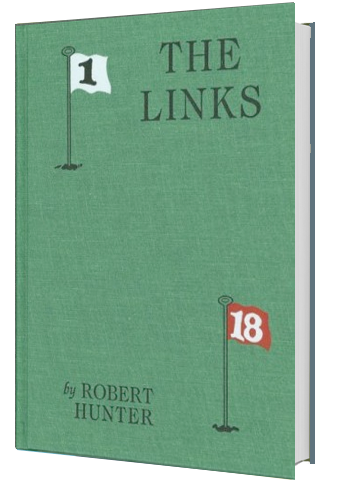The Links (1926)
$45.00
Out of stock
$45.00Read more
By Robert Hunter
A masterpiece of architectural literature, this is the first volume fully addressing the complexities of the golf course in terms of design, construction and definition of the game. The few previous books in the field were either narrowly defined — as Hazards by Bauer — or a compilation of essays such as Golf Architecture by Mackenzie and Some Essays on Golf Course Architecture by Colt and Allison (all Classics of Golf selections.) Robert Hunter conceptualized The Links as a complete study, a manual for the golfing field of play, especially written to those about to develop a course. That an intellectual from an alien discipline would expend his considerable analytical talents on a book about golf course architecture was somewhat surprising—but more surprising was the quality of the effort. Upon publication, it stood as a lighthouse against a sea of confusion and crosscurrents and its beacon has lost little of its luminosity throughout the decades.
It would be hard to imagine a more unlikely author for what is recognized by many in the design field as their “bible.” A free thinker from a wealthy Midwest family, Hunter was not a golf course architect, or even a golfing professional. He was a dedicated socialist reformer, world renown for his actions against child labor, poverty, and public malaise in Chicago and New York. Hunter’s unique understanding of the relationship between golf’s playing surface and the game itself did not come by accident. His hobby was at such an acute stage that in 1912 he spent six months touring courses in Great Britain. Hunter was an astute observer and an original thinker. He concluded that diversity made golf the great game it is and that the severity and singular nature of the famous links contributed to its unconventional nature. If golf was played on a dead-flat fairway bounded by walls to keep every shot in play, with all slopes pitched toward an over-sized hole, he postulated everyone would quit out of boredom. “It is not the love of something easy which has drawn men like a magnet for hundreds of years to this royal and ancient pastime; on the contrary, it is the maddening difficulty of it.” Without challenges, there is no “game” in the game of golf.
To emphasize the point, Hunter tells a superb story about playing with John Ball, the best British amateur before World War I (eight-time British Amateur Champion.) One day, during the course of two rounds, Ball had on five different occasions, asked Hunter if he wanted to agree to a half on the hole. On each occasion Hunter was in a superior position and refused Ball’s request for the half. After each refusal, Ball proceeded, not to halve, but to win each hole, once holing out from the rough and once holing out from a bunker! Ball had demonstrated that, in Hunter’s words, “The keenest delight in golf is given to those who, finding themselves in trouble, refused to be depressed, and, with some recovery, snatch from their opponents what seemed for them certain victory.” This is the reason for hazards then—to keep sport in the game! No wonder the shots that offer the drama of decision-making and the chance for risk-taking, are precisely those often found among the wind-swept dunes of links land.Hunter’s formula is not to replicate but to assimilate, to allow the nature of the site to dictate as much of the design of the hole and its components as possible. Supported by excellent photographs and drawings, Hunter discourses on sand bunkers, and their defining role in golf and golf course design. His 15-points on hazard construction is a concise abridgement of his theories. Another important lesson from The Links is that the climax in golf should be the putting green. Greens must be molded to fit the hole, with sufficient undulation to frequently challenge putts, transitioning smoothly through the approach. Hunter appreciated the radical, sometimes absurd ridges and folds found on classic links, but clearly judges that an architect would be crucified if he intentionally worked such abnormalities into a “modern” design. Many golfers familiar with the Pebble Beach Golf Links may not know Hunter remodeled 9-holes there in 1928 with Chandler Egan and Roger Lapham. Other courses Hunter collaborated on in California were the Meadow Club, Valley Club of Montecito, Mita Vista Golf and Country Club, Northwood Golf Club, Pittsburgh Golf Club, and Green Hills Country Club.
To read The Links is to transcend the act of playing golf, and understand the correlation between the terrain golf is played upon and the quality of the experience. In the final section, Other Things of Importance, Hunter’s continual quest for better golf leads him to call for the publication of books on turf grasses and greenkeeping, equipment and tools, construction and course administration. Why does he care so passionately? The simple answer is he loves the game like we do, but ultimately hears an even stronger inner draw. As a social reformer and theorizer, he sees that, “Golf is rapidly becoming the national sport, and as a sport is far more valuable to us as a nation than baseball or football…As a recreation for all classes, golf seems destined to become as universal as it is beneficial.” More than 75-years later, that prophetic statement, that golf’s popularity would overtake baseball’s and eventually become a world game, seems even more amazing.
Out of stock
Additional information
| Weight | 3 lbs |
|---|

